Nigerian Jollof Rice is a spicy and vibrant one-pot tomato rice that will become a family favorite. It is probably the best-known Nigerian food recipe.
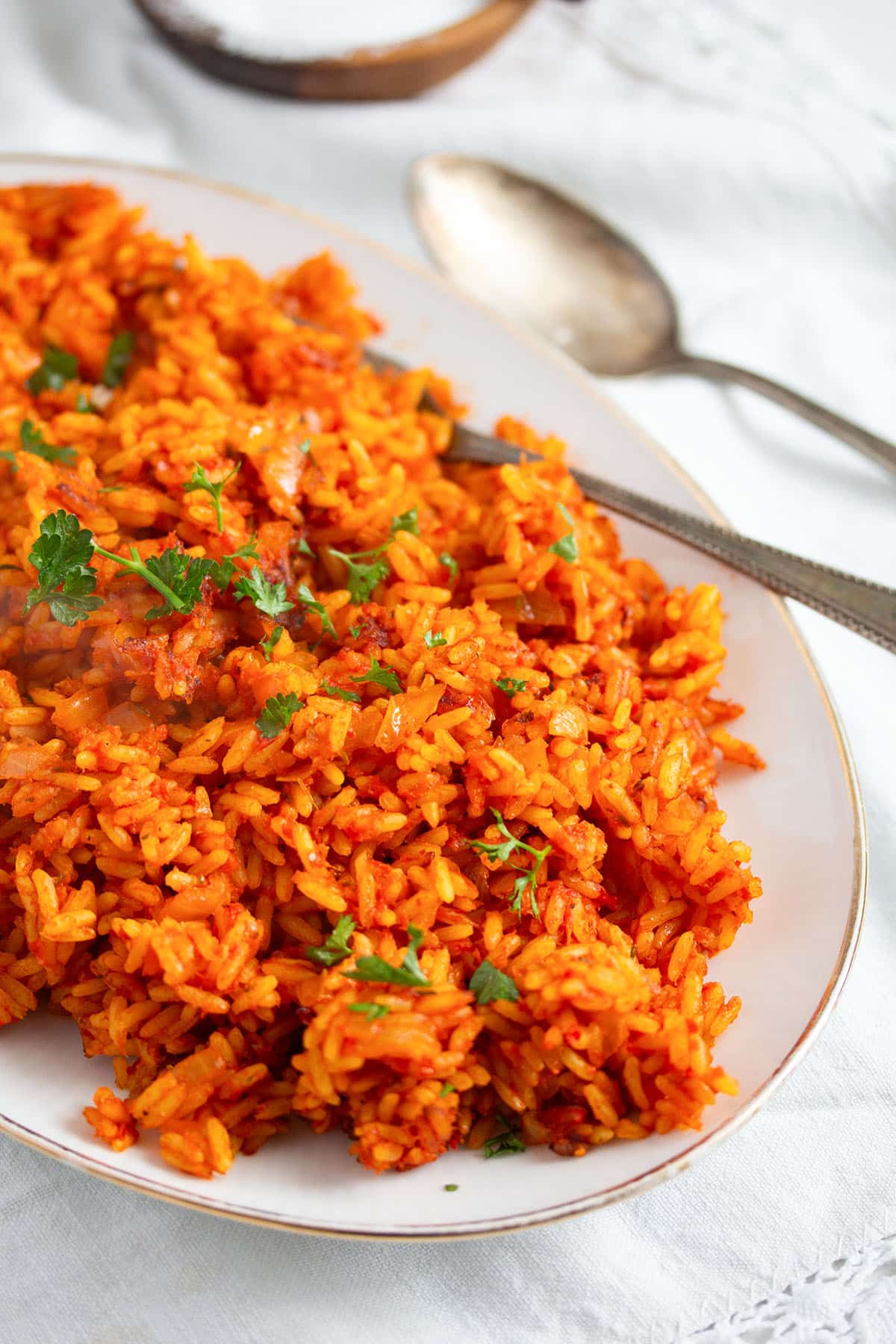
This Nigerian Jollof rice is spicy, fresh, comforting, and satisfying—all in one—the perfect rice dish! I can have it on its own any time of the week, and it makes a wonderful side dish for many dishes.
I do have a soft spot for this kind of one-pot rice dish, and tomato-based rice dishes are my favorite. Try this vegan rice with tomatoes and vegetables or the Romanian vegetable pilaf or Cheesy Corn Rice (with Turmeric).
Jump to recipe
What is Jollof Rice?
Jollof rice is a dish popular not only in Nigeria but in several other West-African countries, such as Senegal or Gambia, Ghana or Sierra Leone. The main idea of the dish is the same in all of these countries but, of course, every country has its own version of it.
According to Wikipedia (the link opens in a new tab), “the name Jollof derives from the name of the Wolof people, though in Senegal and Gambia, the dish is referred to in Wolof as their diene or benching. In French-speaking areas, it is called riz au gras.”
Despite the different names, this dish is found everywhere in the region. Thanks to the many African people living outside Africa, jollof rice has become one of the best-known African dishes outside the continent. No wonder it is utterly delicious and so easy to make.
Ingredients
Parboiled rice: The Nigerian jollof rice is made with parboiled rice. I saw recipes explaining how to parboil rice before even starting to cook this dish. I would have done it, but it was really not necessary, the parboiled sort is very easily available around here, so I preferred to buy it instead.
- The Ghanaian Jollof version is made with basmati, which doesn't have to be parboiled. You could try that version if you wish.
Chilies: You will need a Scotch bonnet. If you can't get it, substitute it with another chili and maybe leave the seeds inside to keep it as spicy as possible.
Maggi stock cube. Many of the African dishes I cooked contain Maggi stock cubes, but you can also use a regular vegetable stock cube. Try more African recipes: Yassa Chicken or Corn in Coconut Milk.
Oil: Another original ingredient used for making this Nigerian Jollof rice is palm oil.
See the recipe card for full information on ingredients and quantities.
An update on palm oil: a Nigerian reader told me that "palm oil is not an actual ingredient in the making of Jollof."
I quote: "Palm oil is used in a variety of Nigerian dishes like vegetable stew, fried pepper sauce (this is a whatever oil you prefer recipe). The only rice dish that Nigerians use palm oil in when making is The Native Concoction Rice, a dish similar to jollof but which contains vegetables, a variety of meat and seafood, and Palm oil, hence the name concoction rice. I understand that recipes can be modified, but it just doesn’t seem right to write that Palm oil is an ingredient used in the making of Nigerian Jollof rice. No Nigerian would ever cook Jollof rice with palm oil and call it Jollof. Just thought you should know. "
However, another reader told me that palm oil is used when making this dish, so I suppose the choice is yours.
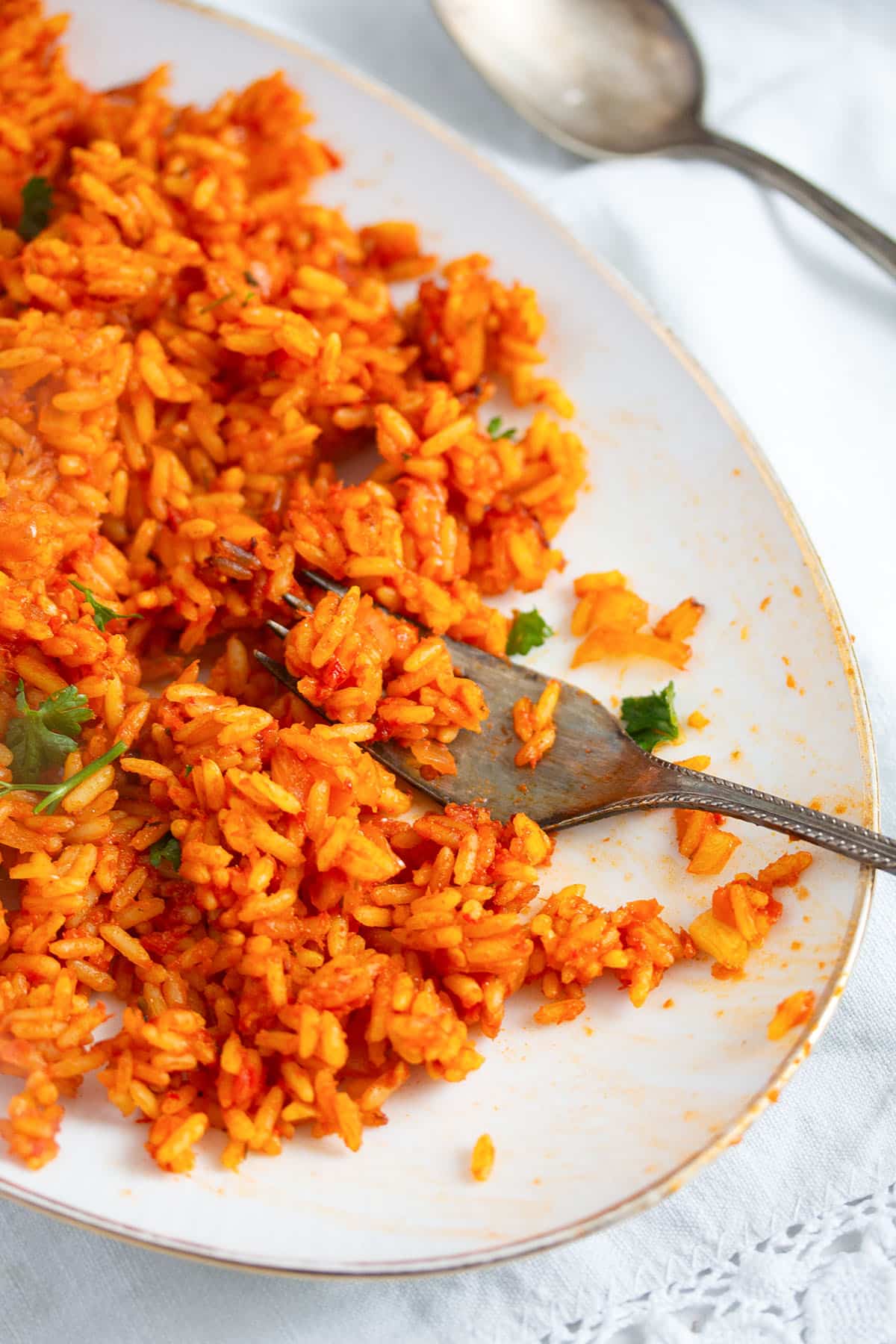
Tips
Sauce: Cook the sauce for a few minutes to thicken it slightly. Add it to the onions with a generous amount of tomato paste to enhance the tomato flavor and color. Once done, reserve about ¼ of the tomato sauce for later. You'll add this reserved sauce to the finished dish to enhance its flavor and color.
Crust: Many recipes suggest letting the rice burn a bit at the bottom for an authentic taste. I wasn't keen on this, so I added smoked paprika and smoked ground black pepper for a smoky flavor. Despite using a non-stick pan, I accidentally burned the rice slightly, which turned out to be delicious. It seems that slightly burning the rice is typical for this Nigerian dish, and the crusty layer at the bottom is absolutely delicious - I wished there was more of it.
How to serve?
- Nigerian jollof rice is often served as a side dish for meat or fish. Often, chicken or other meat is already included in the dish.
- It could also be served with fried plantains, a dish called moi-moi, which is actually a Nigerian steamed bean pudding, coleslaw, or steamed vegetables.
- I served it with some delicious Croatian Cevapci or Cevapcici, which are amazing grilled ground meat rolls. Fusion food, if I may say so, but such a great combination!
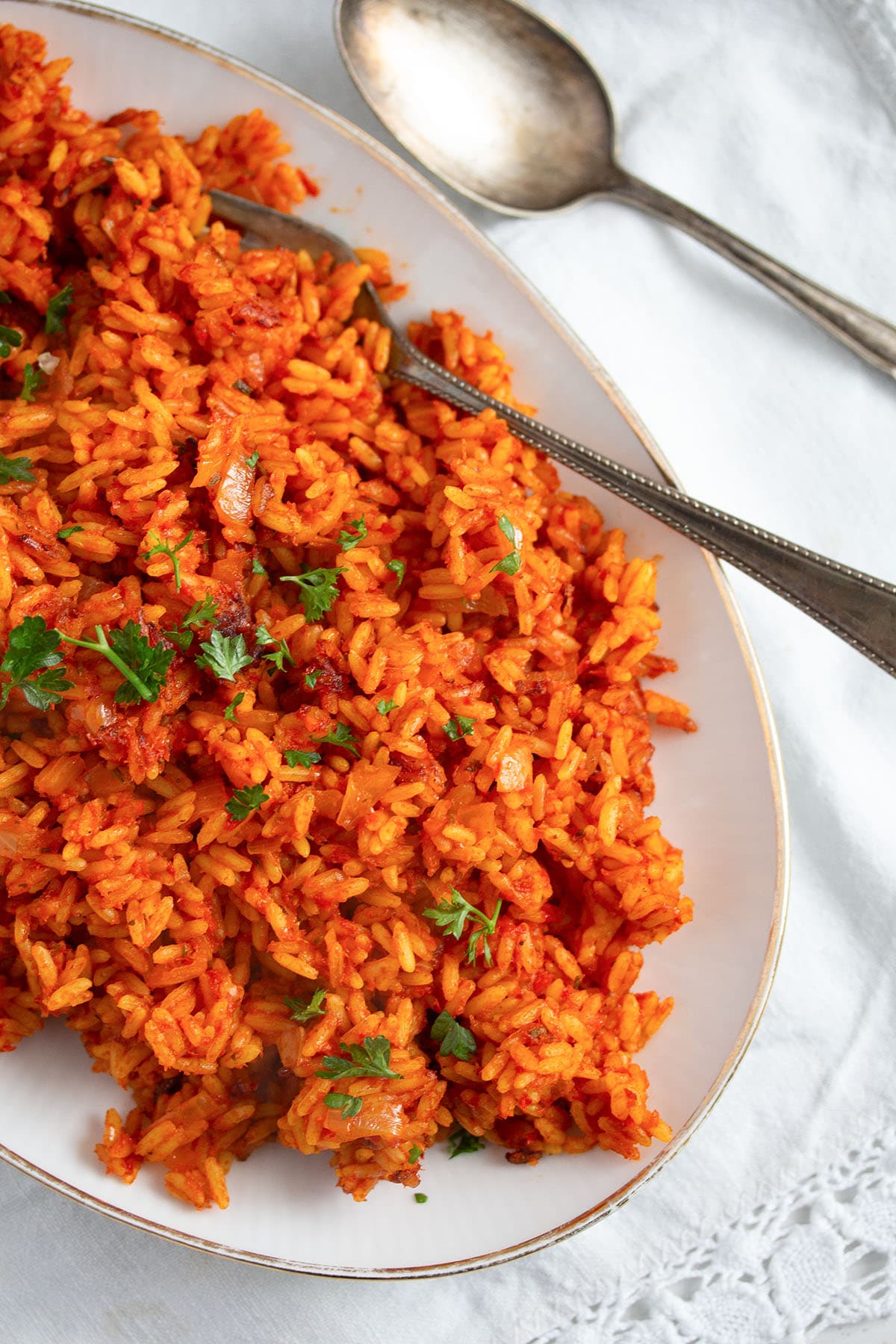

Spicy Nigerian Jollof Rice
Ingredients
- 2 ¾ cups parboiled rice Note 1
- 4 medium tomatoes romana or plum tomatoes
- 1 large red bell pepper
- ½-1 Scotch bonnet or another spicy red chili, Note 2
- 4 tablespoons vegetable oil or palm oil, if available
- 1 larger onion
- 5 tablespoons tomato paste
- 3 cups vegetable broth or chicken stock
- 1 Maggi stock cube
- 1 teaspoon dried thyme
- 2 teaspoons curry powder
- ¼ teaspoon smoked paprika
- 2 bay leaves
- smoked black ground pepper or regular black pepper
- fine sea salt
Instructions
- Blend tomatoes: Roughly chop the tomatoes, red bell pepper, and chili. Place them in the food processor and puree them until smooth. Alternatively, use an immersion blender.4 medium tomatoes + 1 large red bell pepper + ½-1 Scotch bonnet
- Cook tomatoes: Pour the puree into a saucepan, bring to a boil and cook for about 4-5 minutes or until slightly thickened.
- Chop the onion.1 larger onion
- Cook sauce: Heat the oil in a heavy-bottomed pan or non-stick pan. Fry onion until a bit softer, about 3 minutes. Add the tomato-pepper puree and simmer, often stirring, for about 10 minutes. Add the tomato paste, stir very well, and let simmer for another 4-5 minutes until the sauce has thickened. Remove about ¼ of the sauce and set it aside.4 tablespoons vegetable oil + 5 tablespoons tomato paste
- Cook rice: Pour the vegetable or chicken stock into the pot. Crumble in the Maggi stock cube and stir well to dissolve. Bring to a boil. Add the washed rice, thyme, curry, smoked paprika, bay leaves, and salt to taste when the stock is boiling. Stir well, turn the heat down to medium-low and cover the pot.Cook until the rice is almost dry and cooked through. Don't worry if the rice catches slightly at the bottom of the pan; that is the desired effect, as long as it doesn't burn completely.3 cups vegetable broth / 700 ml + 1 Maggi stock cube + 2 ¾ cups parboiled rice/ 350 g + 1 teaspoon dried thyme + 2 teaspoons curry powder + ¼ teaspoon smoked paprika + 2 bay leaves + fine sea salt
- Add the remaining tomato sauce and stir very gently without breaking the crusty rice layer at the bottom of the pot. Add some smoked or regular ground black pepper and salt to adjust the taste.smoked black ground pepper
Notes
- Rice: You can buy parboiled rice or parboil regular rice yourself.
- Scotch bonnet is the kind of chili customarily used for making Jollof rice. Replace it with regular chilies if you cannot find it. Adjust the chili amount according to your heat tolerance, and keep in mind that Scotch bonnet is really hot.


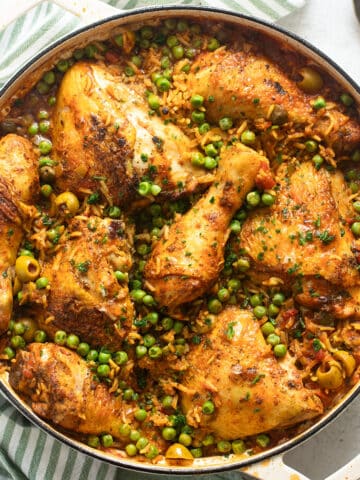
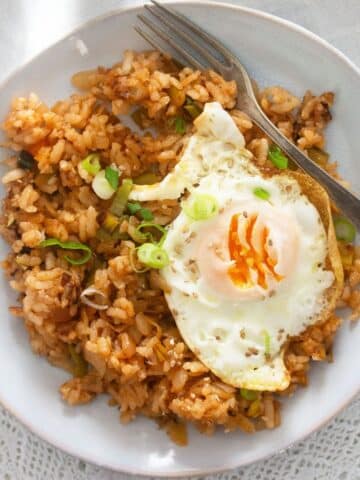
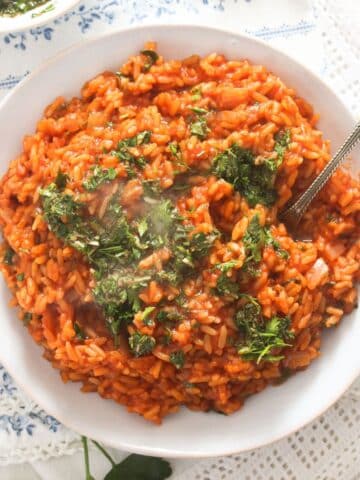
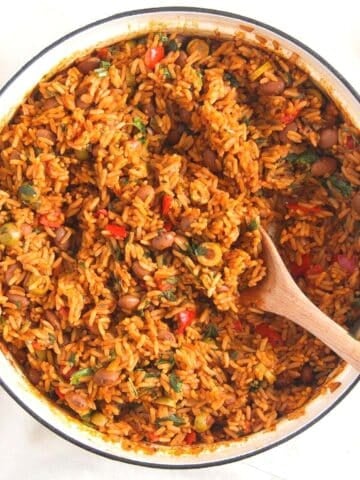
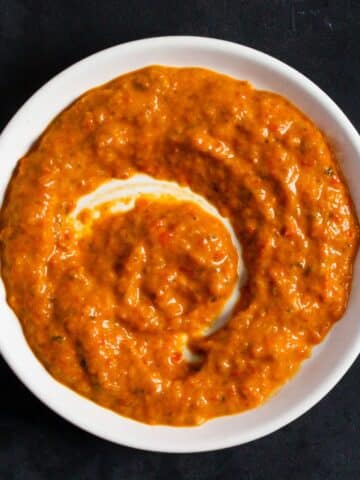
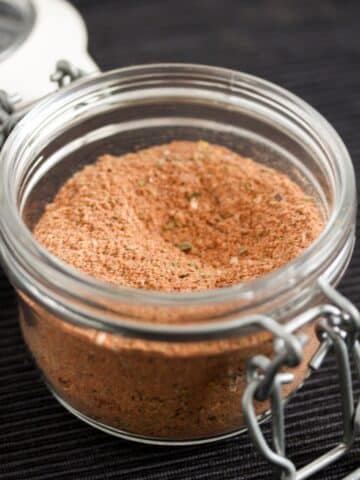
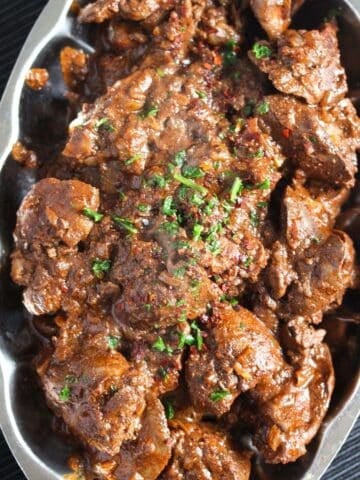
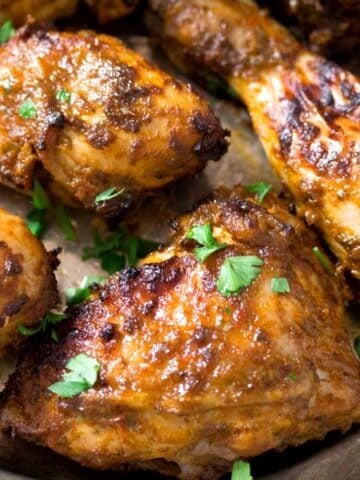

Bebe says
Hi there! Just wondering who took the photos for your recipe. Thank you!
Adina says
I did.
Michael says
I used Maggi sauce instead of cubes. I love the flavor it adds and using the song allowed me to taste test immediately instead of waiting for the cubes to dissolve
Adina says
Sounds good, I am glad it worked for you. 🙂
Grace Alabi says
Lovely recipe, looks very Nigerian. I know you made the oil to use a personal choice, but most Nigerians don't cook Jollof Rice with Palm oil. We use Vegetable oil. It's the native rice that's cooked with palm oil. This native rice is distinct because the recipe contains vegetables, crayfish, stock fish, dry fish and sometimes locust beans. Well done
Adina says
Thank you, Grace. I would love to try the native rice as well, but it would be a challenge to find some of the ingredients. 🙂
Phoebe says
Looks good, I’ll try mine next time with the paprika for the smoky flavour, usually I use a wooden spoon when cooking it for the smoky flavour, or I steam up some firewood in the pot before I even put the oil to cook with the same pot for the smoky effect, this might be a lot easier though haha. As for the palm oil, no Nigerian uses it in our recipe, maybe an attempt at some other kind of recipes but not Nigerian Jollof, it’s a fat no. Well done besides that though!
Adina says
Hi Phoebe, thank you for the input. I wrote in the post about the palm oil issue, some people seem to use it and some not. So, I thought I just leave it in the recipe as a personal choice. 🙂 And yes, smoked paprika is easier to use than wood, but on the other hand, wood is more genuine, I suppose, and actually an interesting thing to try. 🙂
Kelly | Foodtasia says
Adina, this Jollof rice looks so delicious! I can't wait to share it with my family. They love rice dishes like this! I use Maggi cubes in most of my cooking for the boost of flavor it gives. It really does make a big difference in how tasty the food is.
mary anderson says
i made it. And everyone like it and want more and more. I made this today for lunch. It was a hit with us
thanks for sharing this wonderful recipe of spicy jollof rice
Adina says
Thank you. Glad you liked it!
Mary Oyaladeke says
My Grandma uses Palm oil to cook jollof rice. She said that is the oil they were raised on. She said in the early 1960's Palm oil was on of the most popular oils used globally. Her and her sisters used to pick it straight from the trees. I was raised to cook it like that as Well:-)
Tastes amazing. You should try it.
Adina says
Hi Mary. I will try it. I think there is quite a debate about the use of palm oil, I assumed palm oil was traditional, because my Nigerian brother-in-law used it all the time in his cooking. However, another reader told me palm oil was never to be used in this dish. 🙂 🙂
Faith says
I really love the recipe and those are nice pictures. However, as a Nigerian, I have to correct you. Palm oil is not an actual ingredient in the making of Jollof rice. Palm oil is used in a variety of Nigerian dishes like vegetable stew, fried pepper sauce (this is a whatever oil you prefer recipe). the only rice dish that Nigerian's use palm oil in when making it is "The Native Concoction Rice", kind of similar to jollof rice but contains vegetables, a variety of meat and seafood and Palm oil, hence the name "concoction rice." I understand that recipes can be modified but it just doesn't seem right to write that Palm oil is an ingredient used in the making of Nigerian Jollof rice. No Nigerian would ever cook Jollof rice with palm oil and call it jollof rice. Just thought you should know.
Adina says
Hi Faith. Thank you for your comment, I am glad you told me that, I will change it as soon as possible. My sister's husband is Nigerian and he used palm oil for everything he cooked, so I didn't have any doubts about it. But then again, he never cooked Jollof rice while he was here with us.
Malcolm Hollett says
Habanero pepper in the sauce tastes great if you want an extra kick. I accidentally added cumin earlier while making some of this, and it tasted phenomenal (moreso than usual that is)... Just some ideas to try out if you're interested.
Adina says
Thank you, Malcolm, I am always open to new ideas. Cumin sounds really good, one of my favorite spice, I will think about it next time I make the rice. With habanero I have to be careful, that would probably be too much for the children, although I am proud to say that they can take more heat than all kids I know. 🙂
angiesrecipes says
My kind of food too. I like to use tomato puree to make rice, so I definitely will love this one too.